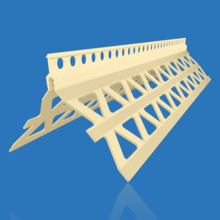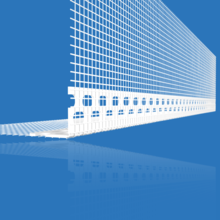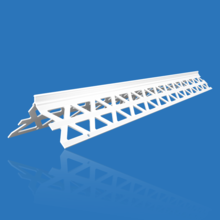Corner Beads
Log in to save items on your shopping lists and access them on all your devices. Guest lists are deleted after 90 days.
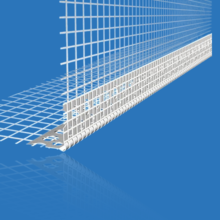
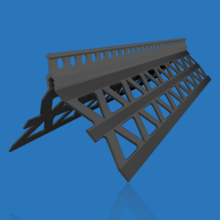
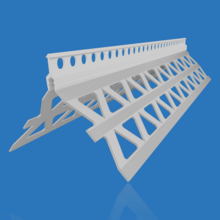
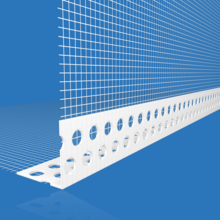
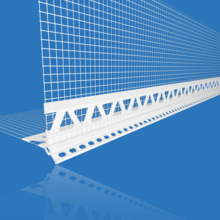
Corner beads provide a straight edge, protect plastered corners from impact damage, and deliver a professional finish on external render and internal plastering applications. Explore our corner beads range to match your substrate and design requirements.
Corner beads for external render and wall protection
On external render, a robust edge is essential. Well-chosen profiles provide protection at reveals, window and door frames, and exposed corners, reducing spalling and helping the wall shed water. Our pvc and PVcU options are UV stable and not affected by background moisture or background salt.
What is a corner bead?
A corner bead is a straight profile with a defined nose that is applied to a corner to ensure a true angle. The profile guides sand and cement, or colour render, so you can rule to a perfect finish. It is commonly supplied in set lengths (mm) and fixed before the coat is applied.
Corner beading sits within the wider family of render trims. See our categories for stop beads, movement beads, and bellcast beads. For reinforcement, combine with fibreglass mesh and the correct base coat.
Types of corner beads
Corner beads are available in various materials and designs to suit different rendering applications. Each type offers unique benefits — from flexible plastic beads for modern façades to durable metal options that provide added strength and precise edge definition.
Plastic beads and their advantages
Plastic corner beads and PVcU beads match modern colour render systems and resist staining and corrosion. They are impact resistant, light to carry, and quick to cut, offering speed and value on site. Many installers choose Renderplas corner beads for durability in high atmospheric locations where metal counterparts may corrode.
Angle beads for precise finishing
Angle beads give a crisp straight edge on both internal rendering and external applications. They provide protection on corners and help achieve a perfect finish at reveals and long runs. Stainless steel options give a robust edge in exposed areas.
The difference between corner beads and angle beads
Corner beads are designed specifically for external or internal corners. Angle beads are often used on straight edges where a defined angle is needed, for example on panel edges or trims. Both are suitable for cement-based coats when installed to the manufacturer’s stipulations.
Applications of corner beads
Use profiles around door frames and window openings, on rendered and plastered corners, and along façade details where a neat line and long life are required. Plastic beads are ideal where UV-stable PVcU is preferred, while stainless options suit coastal projects or areas with high atmospheric exposure. Galvanised steel may be used for sheltered internal plastering applications.
What is the easiest corner bead for beginners?
Many beginners choose PVC-only profiles because they are light, easy to cut, and tolerant of minor handling errors. PVcU beads are also less likely to stain and can outlast some metal options in damp conditions.
Installation of corner beads
Cut to length, check the line with a straight edge, then embed mesh-wing profiles into the base coat or fix mechanically where specified. Ensure the nose is true before the coat is ruled off. Follow the product page guidance for mm size, background preparation, and curing times.
Is it better to screw or nail corner bead?
Fixing method depends on profile type and background. Plastic options are typically embedded or adhesively fixed; metal may be pinned or screwed. Always follow the product data to ensure compatibility with the wall and the coat that will be applied.
What can I use instead of corner bead?
In some heritage details, lath and skim or carefully formed arrises are used, but a dedicated profile is the most reliable way to provide protection and a consistent result on most projects.
Benefits of using corner beads in external render systems
- Provide protection against impact damage at exposed corners.
- Help achieve a perfect finish with a defined angle and straight line.
- Options include plastic, PVcU, stainless, and galvanised to suit site conditions.
- Many profiles meet British and European standard guidance; selected products are BBA certified.
Tools and accessories
Complete the setup with tools and accessories for cutting, fixing, and ruling off, and choose colour render to match ivory, white, and other options. Category pages show stock status and pricing ex VAT and inc VAT, with VAT added at checkout. Add items to your basket and place the order when the job is ready to start.

